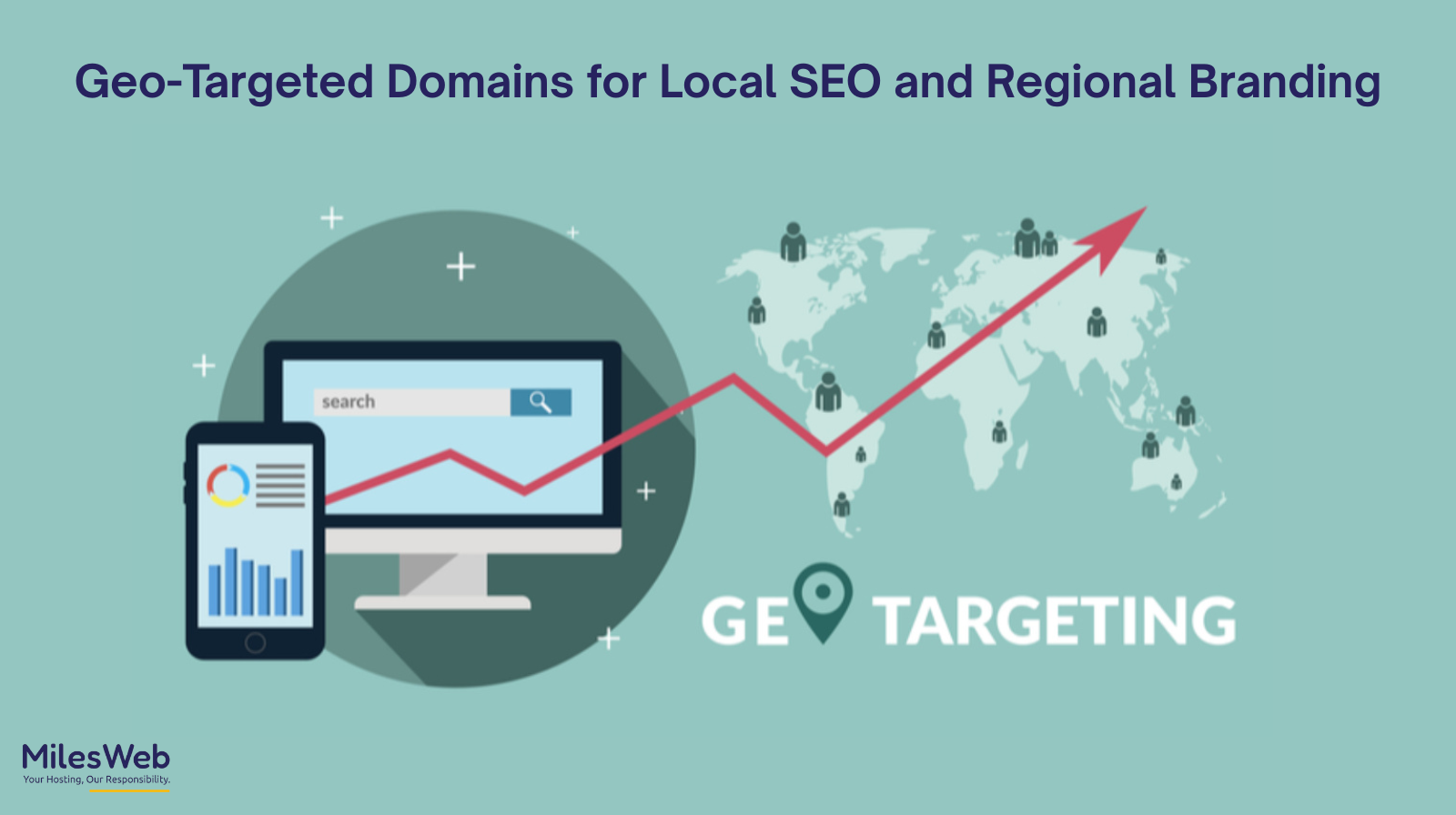Picture this: you are searching for a bakery in London. You go to Google and type “best bakery London.” One of the top results is SweetTreats.com.au. With the search results, you already know it is a local business. This is the advantage of a geo-targeted domain: when you buy a domain name online and make it localized, it helps search engines and customers instantly know your business location.
In the current era of competition, the cheapest domain names are not mere addresses. Rather, geo-targeted domains serve as strategic assets for enhancing local SEO and reinforcing local brand identity.
Therefore, let’s discuss in detail why geo-targeted domain names are essential for your business.
What Are Geo-Targeted Domains?
A geo-targeted domain is a web address that includes a location reference: It includes the following:
- Country-Code Top-Level Domains (ccTLDs): e.g., .in for India, .uk for the United Kingdom, and .ca for Canada.
- Location-Specific Keywords in the Domain: e.g., BakersInDallas.com, NYCPlumbingExperts.com.
Search engines can easily link your site with a region, pushing your website in SERPs when visitors search around these domains, thereby improving your search results for that region.
Why Geo-Targeted Domains Matter for Local SEO
Search engines intend to provide the best results to users. This is why, with domains that include the user’s location or a local term, there is a higher chance of ranking for geo-specific queries.
Primary Local SEO Benefits:
- Enhanced Local Connection
For example, PizzaManhattan.com is a website domain that shows immediate location relevance.
- Greater Click-Through Rates (CTR)
Recognition of a local connection boosts click rates as well.
- Stronger Google Geo-Targeting Cues
ccTLDs automatically inform Google of the country you’re targeting.
- Local Search Competitive Advantage
In smaller markets, having a geo domain is an advantage, as it helps outperform generic .com competitors.
In What Ways Do Geo-Targeted Domains Aid Regional Brand Marketing?
Branding structures identity. The surrounding locals automatically relate to a geo-targeted domain.
- Trust Factor: Canadian customers receive the message “We’re one of you” with a .ca domain.
- Cultural Alignment: Relatability increases with the addition of a city or country name.
- Event or Campaign Event Marketing: For example, the Paris Summer Festival has a website with the domain ParisSummerFestival.fr, which draws a lot of attention.
- Illustration:
SydneyWeddings.com.au holds strategic positioning as a wedding service in Sydney, which makes it a go-to service.
The name is concise, easy to remember, and directly references the location.
Recommended Approaches to Selecting a Geo-Targeted Domain
Focusing on SEO and clear branding impacts your choice of domain. Here’s how to achieve the right balance:
1. Make It Short and Easy to Remember
Long names like BestAffordablePlumbersInBirmingham.com are a “no-go.” These increase confusion and users will not likely remember such a long name. Catchy names are a better target. Look at BirminghamPlumbers.com. The shorter, more precise and problem-solving your domain is, the higher the chances of your website’s growth.
2. Add a Target Location
Utilize the city, region, or country name in the domain.
3. Use ccTLDs for Country Targeting
Use .in for India, .co.uk for the UK, and .com.au for Australia.
4. Avoid Keyword Stuffing
Every keyword shouldn’t be crammed in. Google views such attempts as spamming.
5. Match Branding Tone
Domain should fit the overall brand voice and theme.
When to Use Geo-Targeted Domains
Geo-domains are not for everyone. The best fit for these are those that have:
- Only one operational base.
- Multiple served regions with distinct localized sites.
- Hyper-local targeted marketing.
Example:
A travel company operating in both India and the UK might use:
- ExploreIndia.in for Indian customers.
- ExploreIndia.co.uk for UK customers.
Potential Drawbacks (and How to Avoid Them)
Geo-domains are limited by:
- Scaling Issues—Broadening the target area may result in outgrowing the domain’s relevance.
Solution: Employ a subdomain or subfolder structure where the location is used.
- Risk of Duplicate Content—Having multiple localized sites may lead to identical portions of text.
Solution: Ensure distinct, localized text is used for each domain.
- SEO Overhead—More domains translate to more optimization work.
Solution: Observe strong technical SEO, canonical tags, and geo-targeting settings in Google Search Console.
Outlook on Geo-Targeted Domains in SEO
In 2025 and beyond, Google will continue to prioritize relevancy and intent. With AI-enhanced searching and personalization tied to user location on the rise, geo-targeted domains will continue to be especially useful—particularly for small businesses that are pitted against larger, nationally recognized brands.
Emerging trends:
- Optimizing for Voice Search—Users utilize the phrases “near me” and city names in voice searches.
- Hyperlocal Marketing—These are aimed at the neighborhood level for dense urban areas.
- Localized Campaign Microsites—These are short-term geo-domains for events, launches, and seasonally themed offers.
Insights Recap
The geo-targeted domain is the current need for your business’s scalability. With affordable domain registers like MilesWeb, you can easily buy and register geo-targeted domain names. It stands for relevance, trust, and branding in one.
Through well-informed decisions, one can achieve:
Better ranking on searches relevant to your business’s location.
An improvement in the click-through rates of business adverts.
Better brand perception as the business’s regional identity is reinforced.
Geo-targeted domains can provide an edge in SEO for businesses reliant on local patrons. In this era of personalized searches, the domains translate to market ownership.
